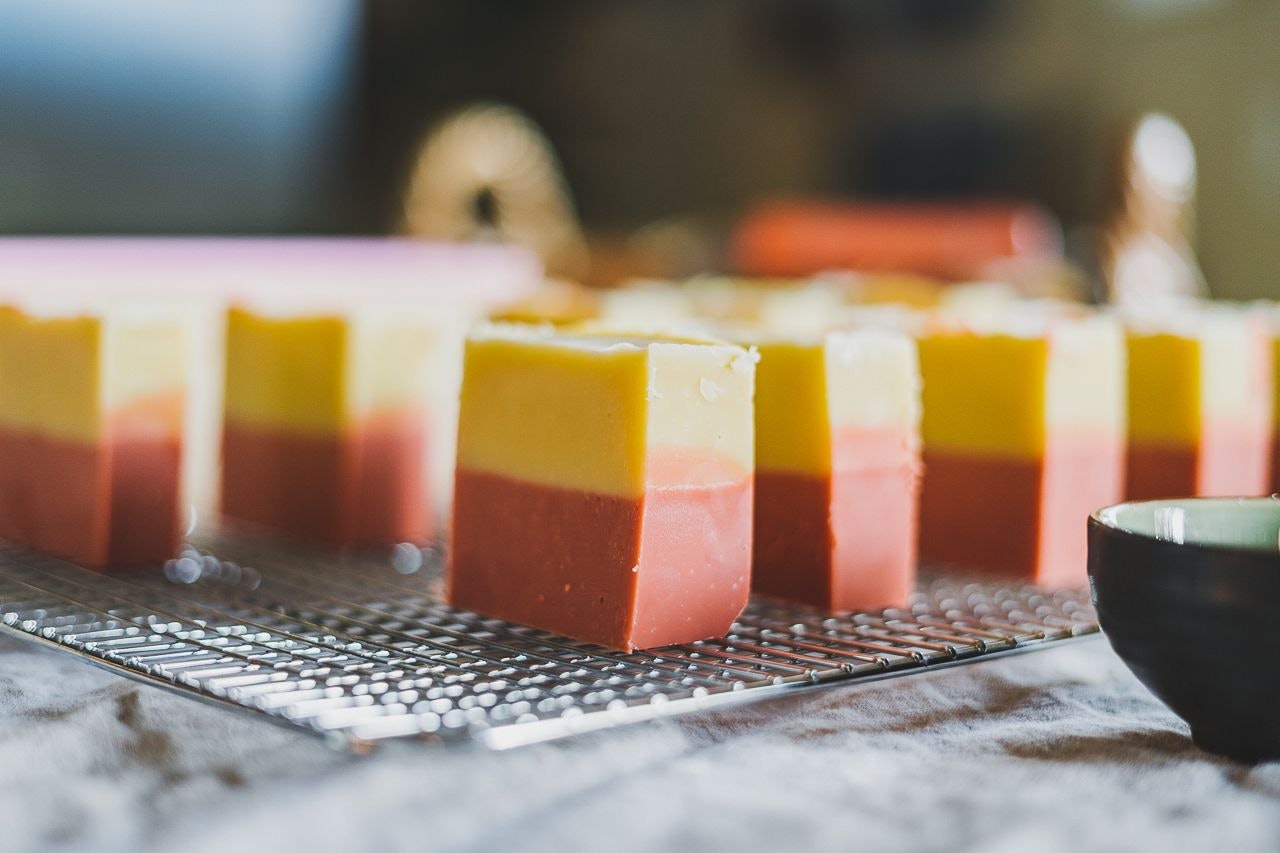
Years ago, I took a class at a studio in Portland to learn how to "make" melt-and-pour soap. Being a questioner, I then decided I wanted to go a step further and make it from scratch, but the chemistry aspect of precisely measuring ingredients and dealing with sodium hydroxide prevented me from diving straight into it.
Lucky me, a couple of years later, my friend Em suggested I shadow her so I could get over my fear of manipulating lye. I suppose I'm a visual learner and I also tend to prefer learning with a real person rather than watching a video (though my YouTube watchlist is full of DIY and tutorials!).
After a fun hour of watching Em work her magic, I finally got the hang of it and soon after, I was making my first batch of soap!
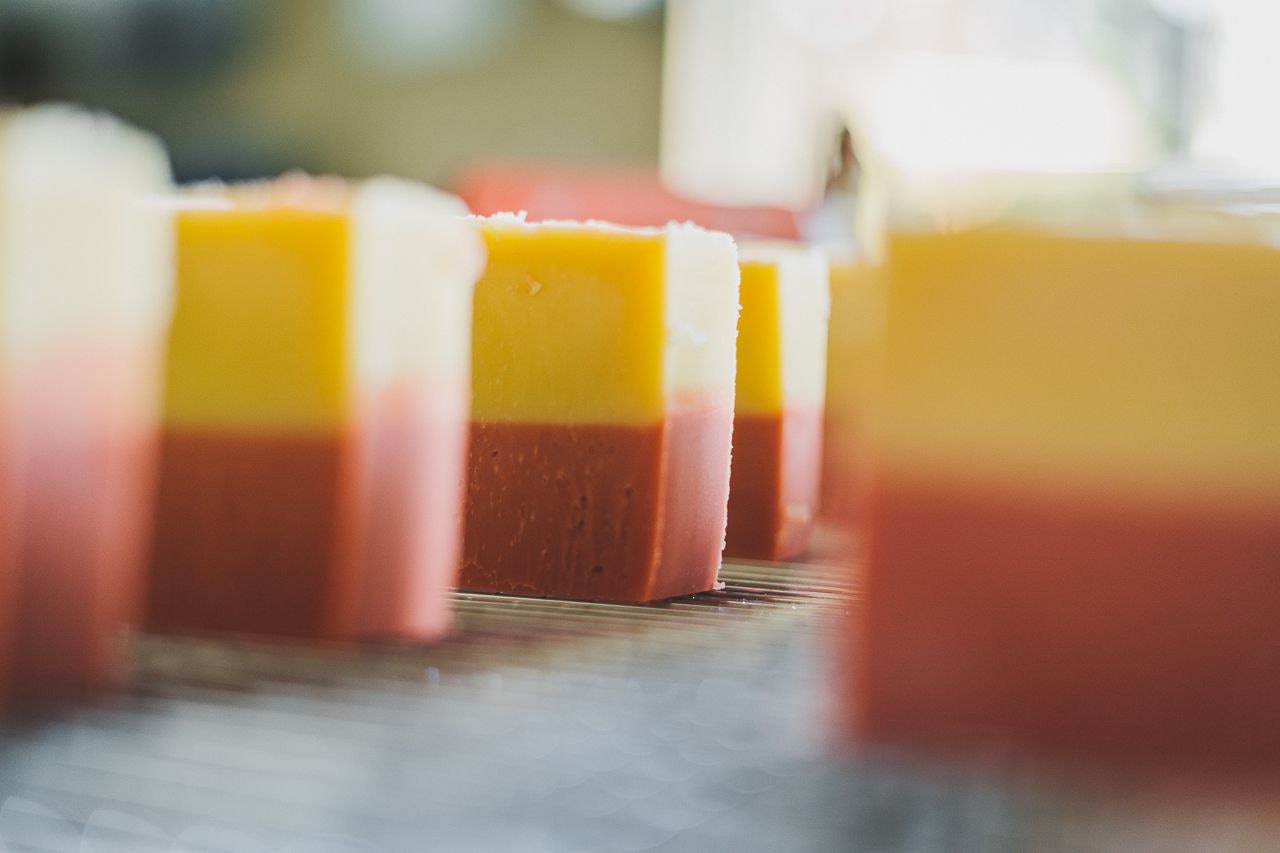
My first attempt wasn't quite successful, but I ended up with a fun stock of charcoal liquid soap (liquid and charcoal isn't the best combo, but it was better than throwing everything away and starting again).
My second attempt worked like a charm. It was a plain soap, not oil, no flowers, just a solid brick of yellow soap.
And for my third attempt, I decided to get adventurous!
But first, let's talk about equipment.
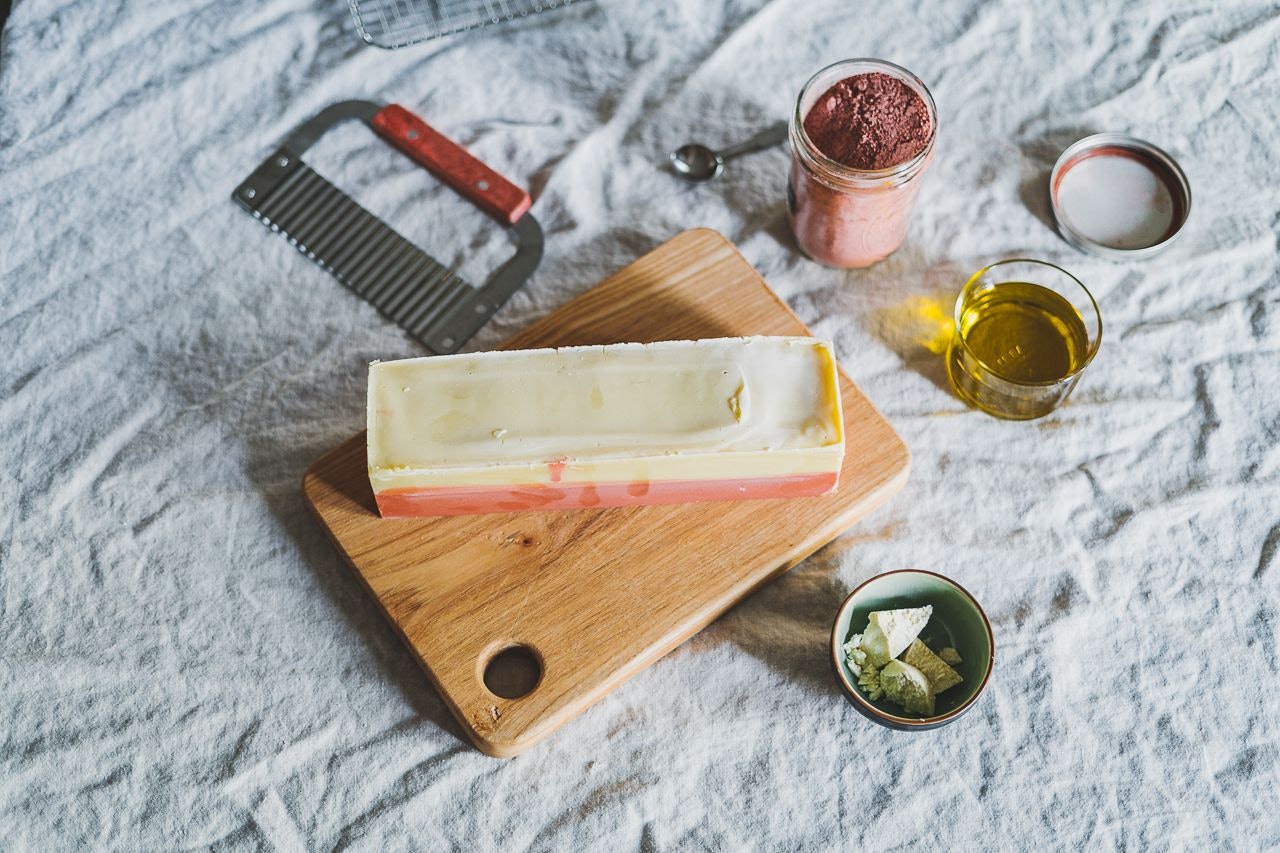
Equipment
Here are my soap-making essentials.
There are a couple of ways to be thrifty with soap equipment, but it is recommended to have certain items dedicated to soap making to prevent contamination (rather than using the same items for cooking and DIYing).
I like to ask whether people have extra and unused pots and measuring spoons on Buy Nothing. Can you believe a neighbor gave me an immersion blender? How lucky am I? Your local resale store is also a great source for cheap and preloved equipment.
As you'll see in the recipe below, you can also make your first soap molds out of juice cartons.
Here's a list of what you'll need:
- Digital Kitchen Scale
- Immersion blender
- Infrared thermometer / digital thermometer
- Stainless steel pan for melting the solid oils
- Large bowl for measuring the liquid oils into
- Heat-proof container for the lye solution (I use a Bonne Maman jam glass jar)
- Small strainer (to transfer the lye solution)
- Rubber spatula for stirring, scraping, and pouring
- Soap mold (or juice carton)
- Goggles (eye protection)
- Respirator or mask
- Gloves
- Long sleeve shirt
I've also added these Mix & Pour Funnel Pitchers to my thrifting/shopping list to make pouring layers easier.
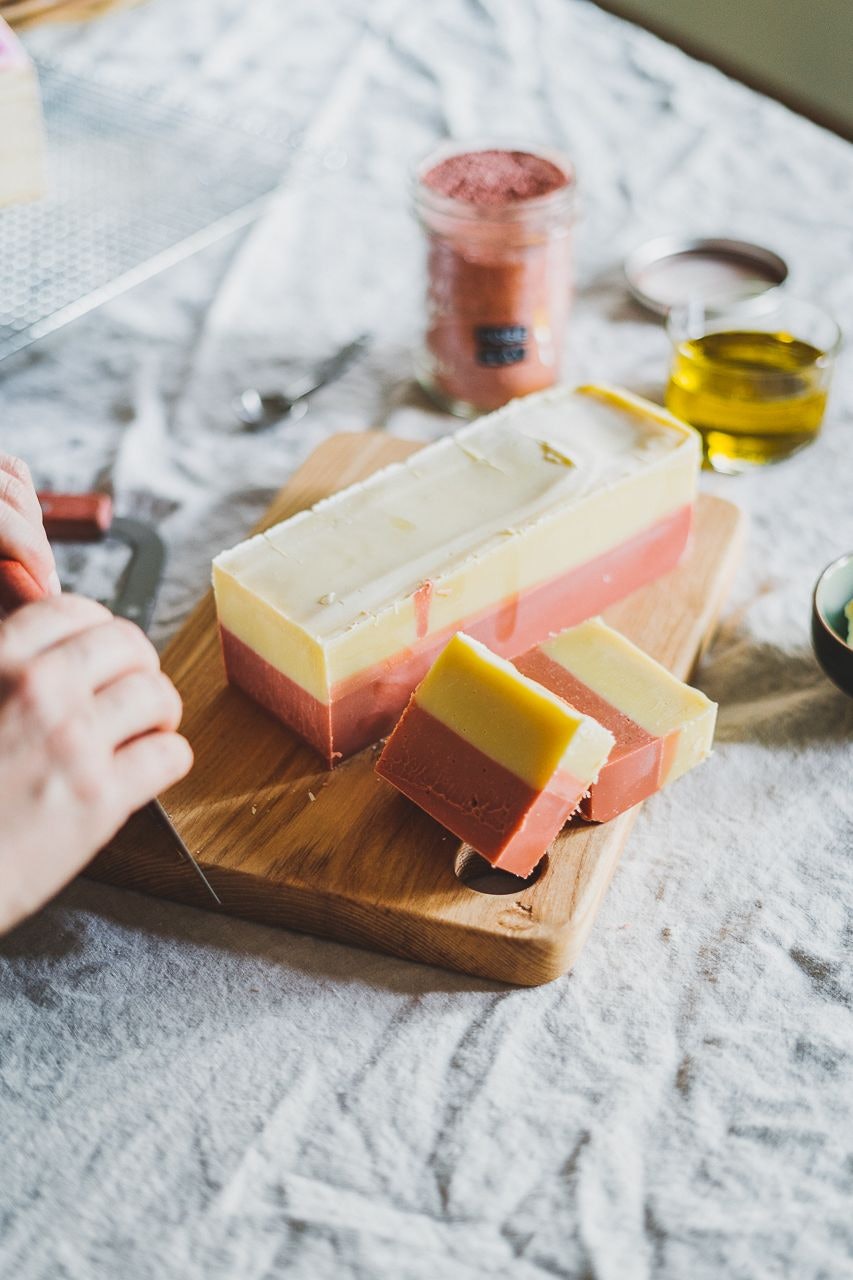
Recipe
Em recommended I start with this soap recipe.
I usually multiply the recipe by 2 in order to fill my molds and sometimes replace the shea butter with cocoa butter because that's what I had on hand and the measurements remained the same for both ingredients.
For the two-layer recipe pictured, I started by making the linked recipe as is, and then realized that it did not fill my molds, so I then decided to have fun and make my second batch pink. To do this, I had to adapt the recipe a little since I would be adding a dry ingredient (pink clay) to the liquid ingredients. For this, I adapted this recipe.

So the measurements for the pink half were as follows:
Lye solution
- 63 g Sodium hydroxide (2.22 oz)
- 126 g Distilled water (4.44 oz)
- 1 tsp Pink/Rose Clay (5 g)
Solid oils
- 114 g Coconut oil (4.01 oz)
- 91 g Shea butter or coconut butter (3.21 oz)
Liquid oils
- 227 g Olive oil (8.02 oz)
- 23 g Castor oil (0.8 oz)
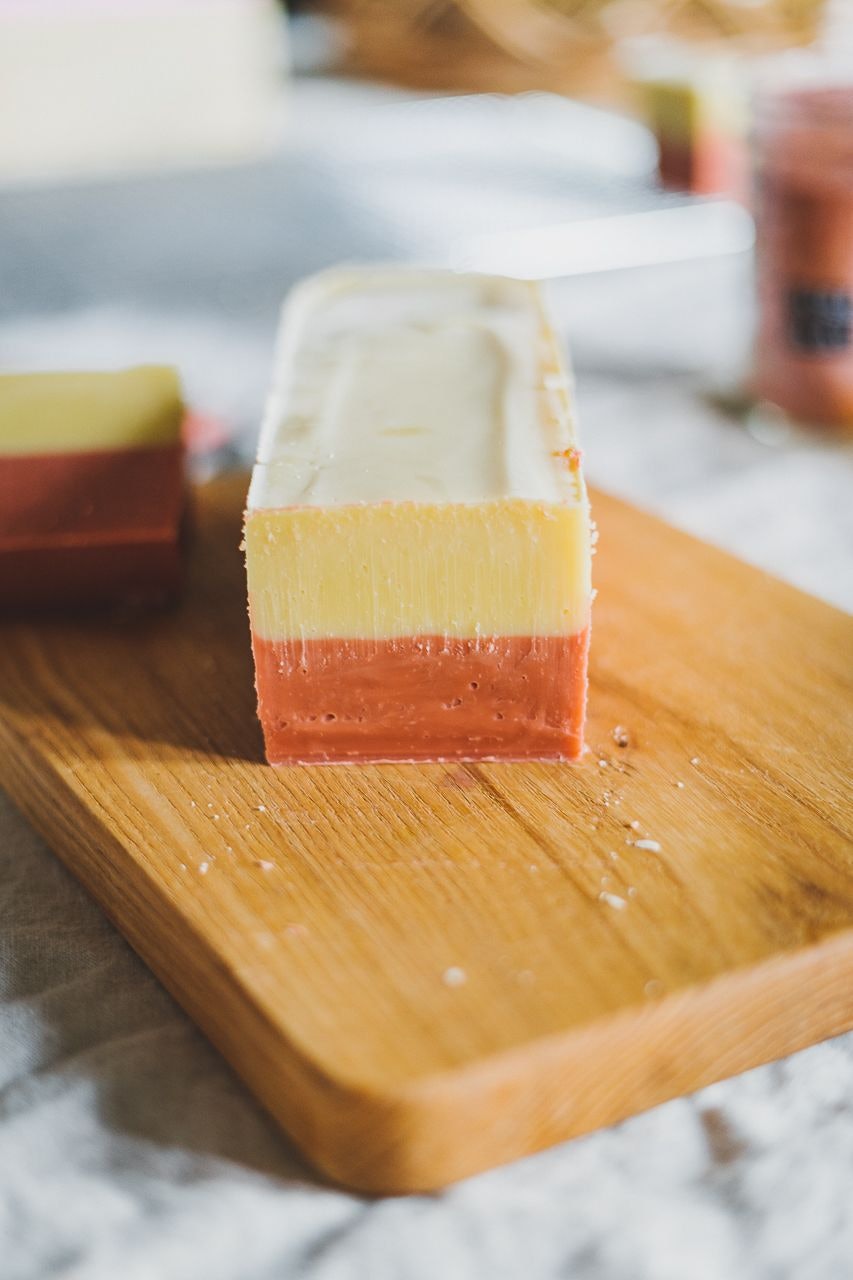
How to make layers
Here's a trick to pour the second layer and get a perfect line.
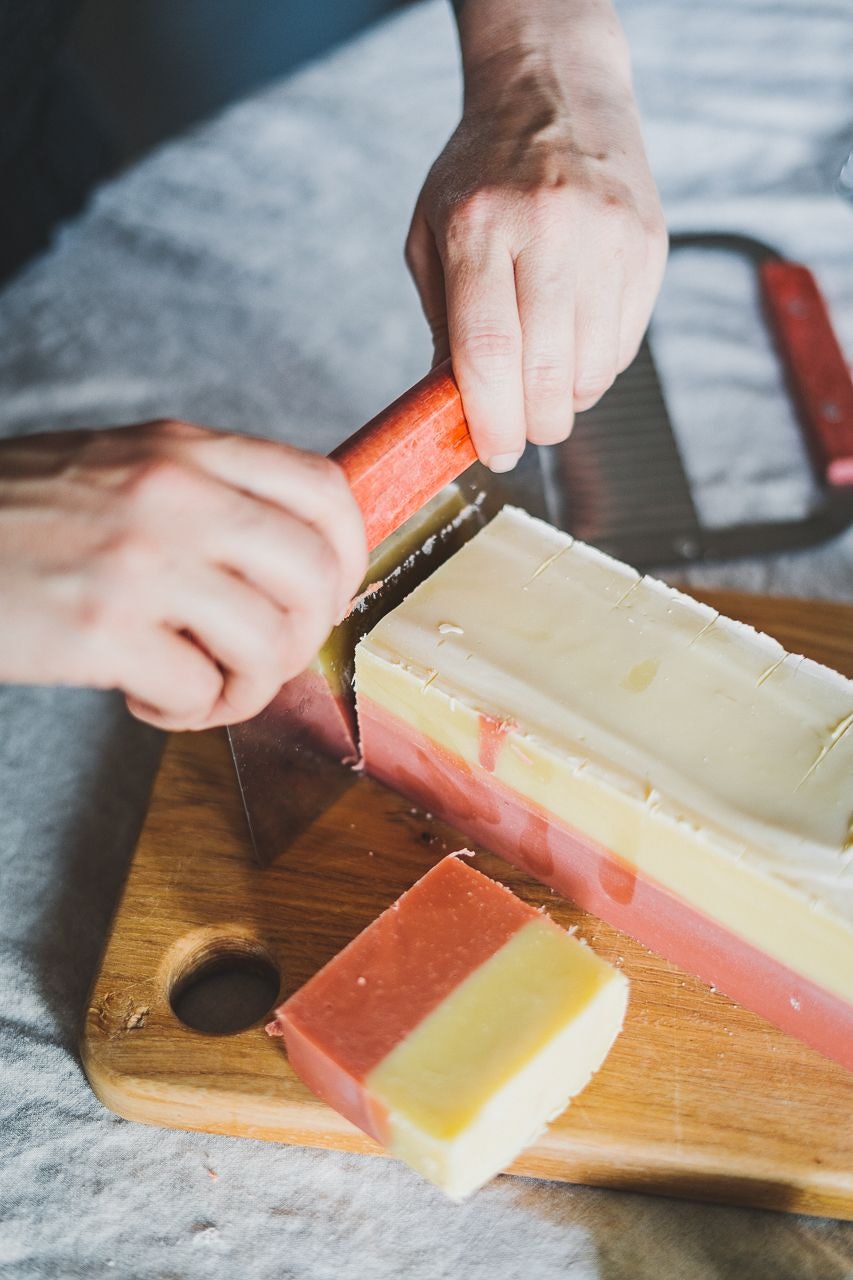
How to cut your soap
I currently do not own a soap cutter (or a planer for that matter) but could see myself investing in one (or making a miter box) in the future. My friend Sandra gave me this trick to cut soap that has flower petals and embellishments on top: lay the loaf on its side so your blade will stay clean and the petals won't leave drag marks in your soap. Genius!
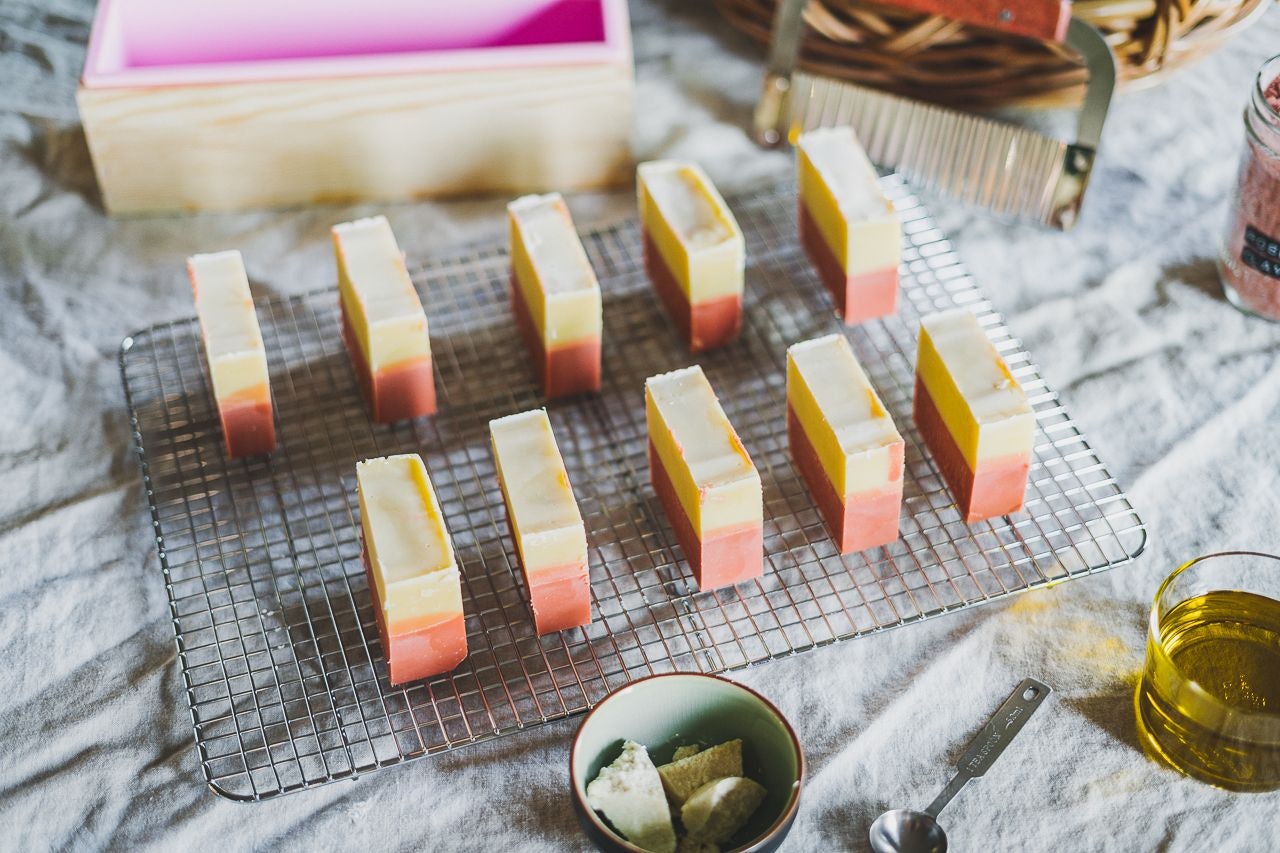
Now I'm getting excited to experiment with more daring designs and essential oils. This pointy layers technique also looks so beautiful!
I'm also looking to have a little more fun with creating texture on the surface and sprinkling flower petals and other decorations. My friend Hannah came last week and we made pink soaps with calendula-infused olive oil, citrusy essential oils, as well as yarrow and marigold petals. I cannot wait for them to cure!
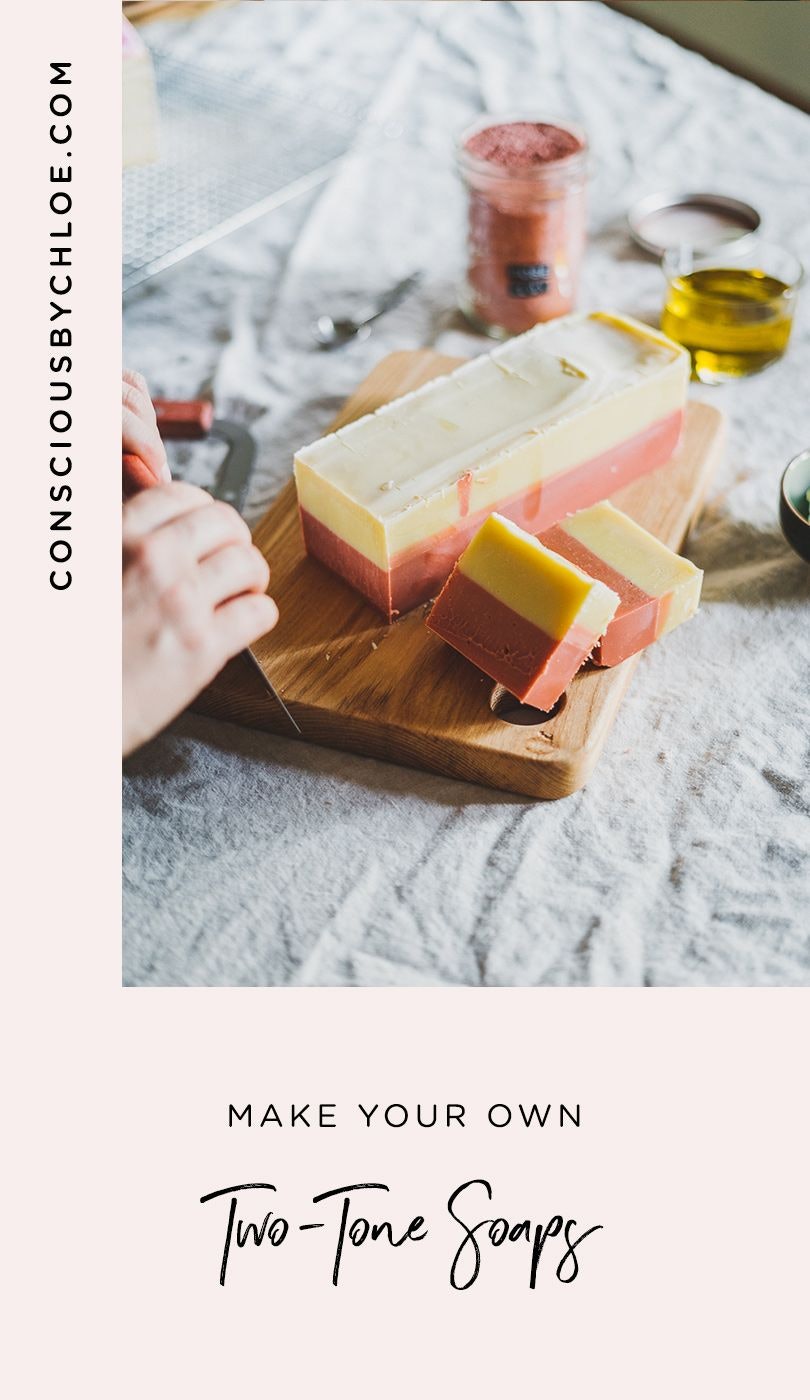
This post is not sponsored, but it does contain affiliate links, meaning if you make a purchase via one of my links, I may make a commission at no additional cost to you. Thank you for your support!








